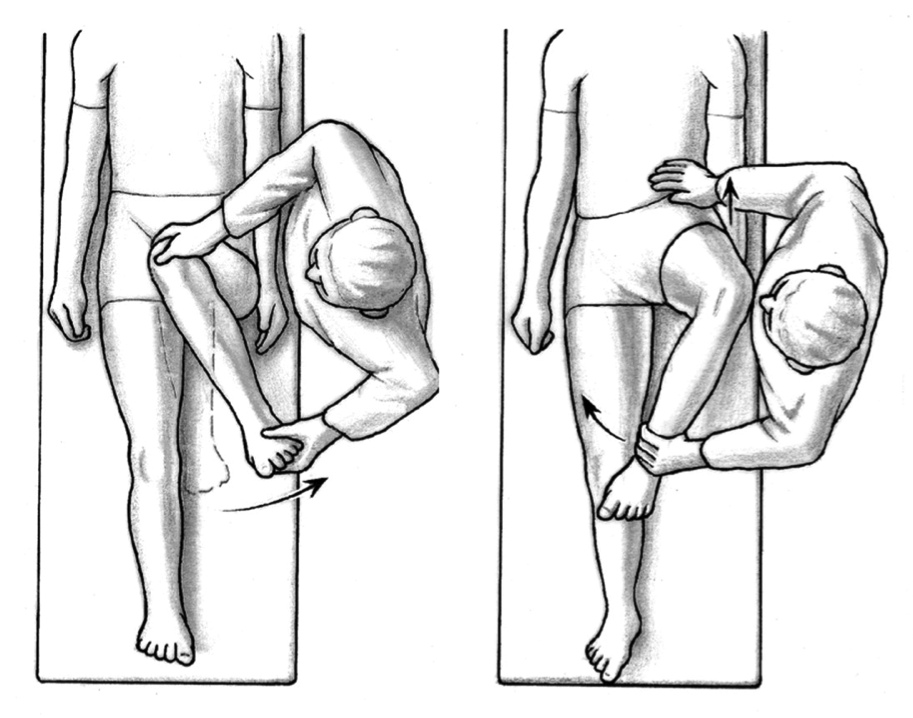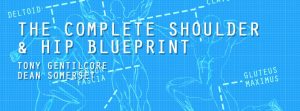Healthy Hips, Strong Hips
The other day I put up a brief status on social media talking about some observations I’ve made on hips:
I’ve worked with a lot of clients on either end of the spectrum: some with severe osteoarthritis or other degenerative changes to the hip joint that’s reduced their abilities to move or get stronger, as well as some elite athletes chasing bigger numbers.
In many cases, strong hips are also mobile hips. However, some training phases or programs will purposefully reduce range of motion in less necessary movements (think peak phases or specific skills) and if left unchecked will result in a loss of those ranges not used regularly over time. I’m not talking a single workout here or there, but the accumulation of decades of training.
Strong hips can be very mobile and also very immobile. Mobile hips can be both extremely powerful and also barely powerful at all. They’re not always specifically linked, especially in the face of repeated trauma or degenerative changes.
Birrell et al (2001) were one of the first to look at range of motion testing being determinant of the presence of hip osteoarthritis and compared to the ability to predict against radiography, and found severe OA was very well linked to reduced internal rotation. This association was even independent of gender or age. However, they didn’t show a specific association to a loss of hip flexion and OA in this study.
A study by L’Hermette et al looked at retired handball players and rates of OA development of the hip compared to controls, and found the rate of OA development was more than 4 times higher than age-matched controls, and the biggest range of motion losses were internal rotation and flexion. Based on the demands of their sports, they crushed it in extension and external rotation though.
The Harris Hip Score, a major diagnostic tool in determining function of a hip and whether the individual should get an arthroplasty, lists hip flexion as the defining functional range of motion of all ranges available, giving the greatest range of points between lowest and highest scores. A significant decrease in hip flexion, even in the presence of no other dysfunction, can drop a score significantly and may in some cases warrant intervention.

From my own experience, most people with some form of structural issue within the hip have reductions in pain-free hip flexion and internal rotation. There are always the odd ones who also have other reductions, but the vast majority seem to follow that pattern. Also affected would be adduction as well as abduction, depending on the type of issue they’re dealing with.
Conversely, when it comes to power production or most elements of sport performance, athletes are trained to generate force through hip extension with some element of external rotation. A skate stride in hockey is entirely hip extension and external rotation, as are most explosive cutting movements in football. Olympic lifting and powerlifting all originates from hip extension in some form for their drive phase, and the best runners in the world have a massive hip extension swing phase during their gait cycle, and the size of that extension is one of the easiest ways to separate world-class runners from average ones.


So while we’re chasing explosive power and force production through external rotation and extension, we should likely do a few things to help maintain the other ranges of motion to make sure we have a fighting chance of maintaining those ranges as long as possible, especially if you compete in a relatively set pattern activity that doesn’t have as much movement variability. Sports like golf, running or cycling, powerlifting and others like this all do similar movements and skills the exact same way all the time, so doing some variations are pretty much par for the course (get it???) for keeping those ball and socket joints as ball and socket joints.
Now, everyone has a different degree of movement in their hips in each direction. Some are pretty much qualifying for Cirque du Soliel, and others are about to qualify as Buckingham Palace guards who only have to stand vertically and march a little bit. There’s no range of motion to shoot for to be determined “healthy” or “unhealthy” or even a necessary range for performing specific sports or activities. It’s all about using what you have, trying to squeak out a little more, and being happy with your life.
We all tend to lose mobility with age across all directions, and the older we get the harder it is to see any significant improvements in range of motion related to structural restrictions, so work at it diligently, but don’t think that you have to crush your soul with intensity to see immediate benefits or you fail at life. If it happens that you see improvements, cool, but we’re talking about milimeters of change over months or years, but even maintenance over an extended period of time is a worthwhile goal to shoot for.
In terms of stuff you could do to see improvements, there’s really no one exercise that’s the best, especially since everyone starts somewhere different, but here’s a bunch that could be useful for something like hip flexion.
Now if you want to get some more hip internal rotation, there’s a bunch of ways you would be able to work on that.
The big question after seeing those would be when would you mix them into your programming? As with most things, the best answer of “as needed” is still pretty vague. For young athletes in season, training hip IR or flexion may not need to take up much of your time in lieu of putting in hours for your sport specific training, but I’d say your off season or early phase in season should involve some elements to help maintain through a longer time frame. For anyone over 40 who is just competing recreationally, I would expand the “off season” that uses these ranges and sprinkle them in during the in season, as loss of range of motion can happen faster in this age group than in someone in their teens or 20s.
For someone who is more concerned about delaying hip arthroplasty, I’d include some movements to develop hip flexion and internal rotaion on pretty much a daily basis, regardless of the main goals the individual is working towards (strength, fat loss, etc).
The overall volume of work in each case doesn’t have to be very significant, a couple of sets of one or two key movements can be all it takes to maintain range of motion. A few more sets on a few more days a week to see some improvements in control and overall range if needed.
For more info on how to get some training into hip flexion and rotation, as well as how varied the structure can be between individuals, plus some awesome shoulder stuff, check out Complete Shoulder and Hip Blueprint, a video series featuring myself and Tony Gentilcore.

This digital video series even comes with continuing education credits for those of you who want to stay certified and all, PLUS the series is on sale until December 2nd at midnight for 60% off the regular price, so act quickly to save some big bucks.
2 Responses to Healthy Hips, Strong Hips